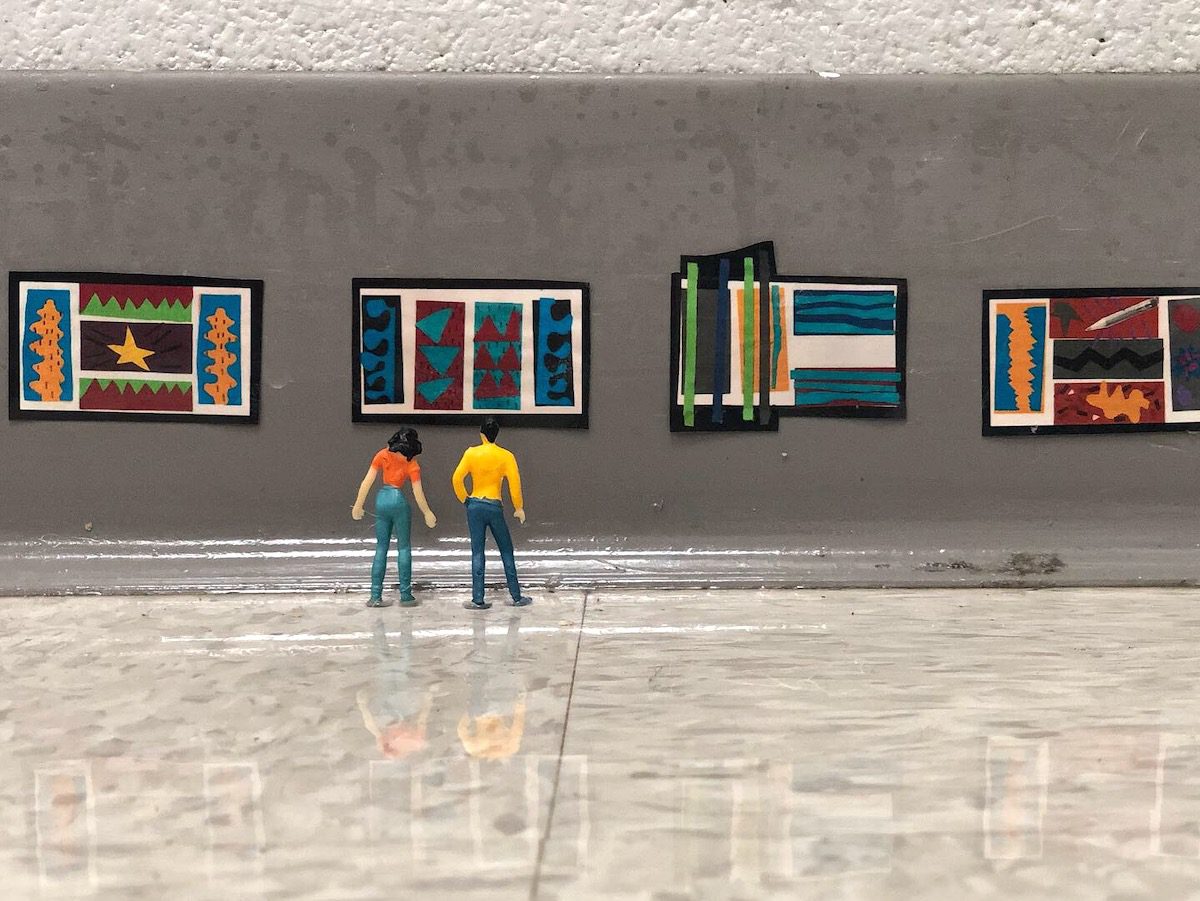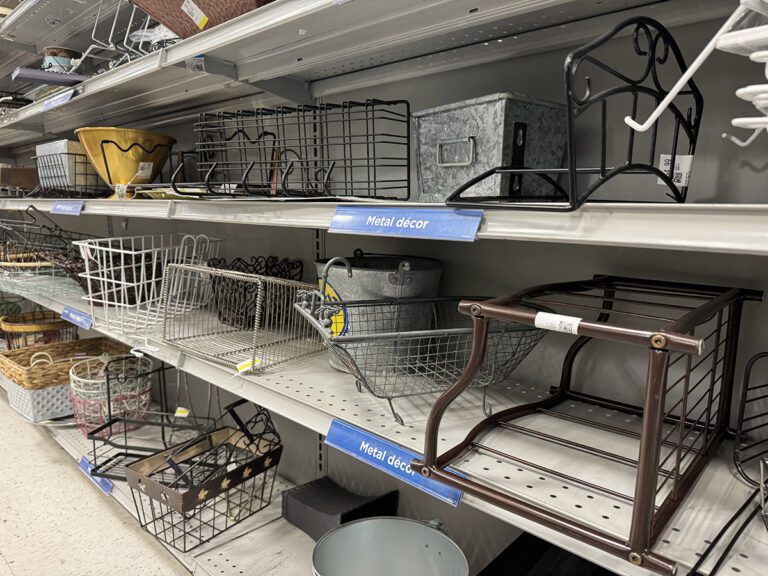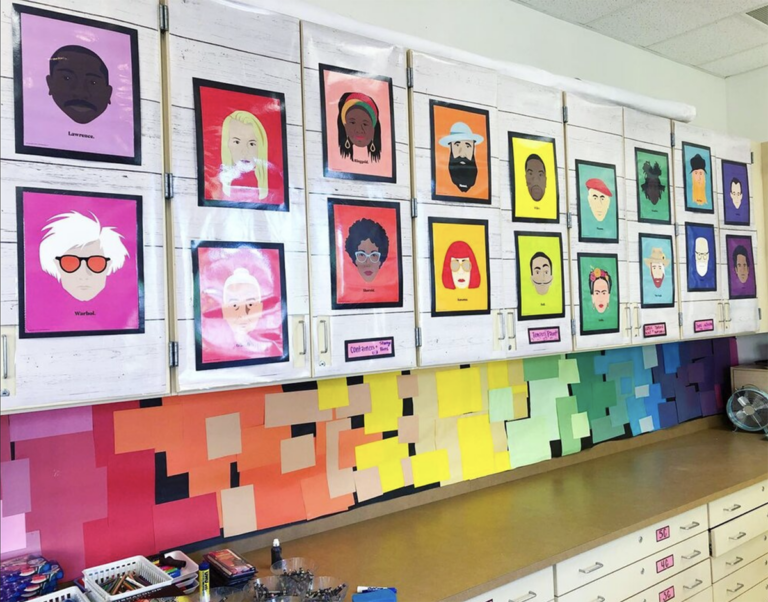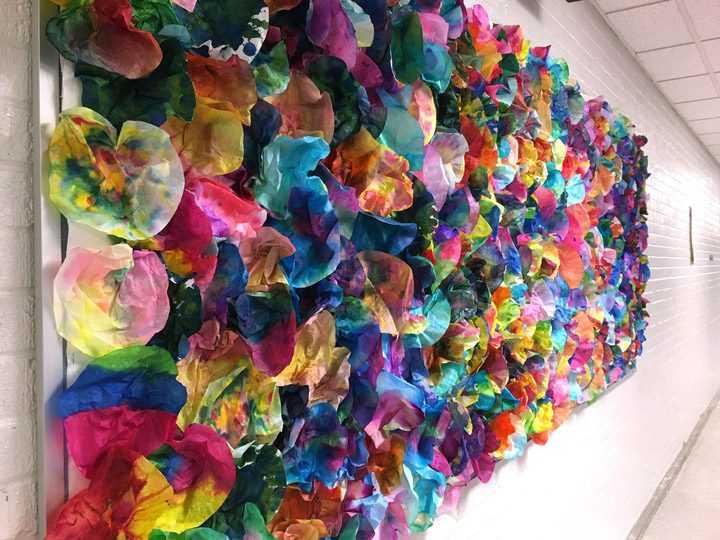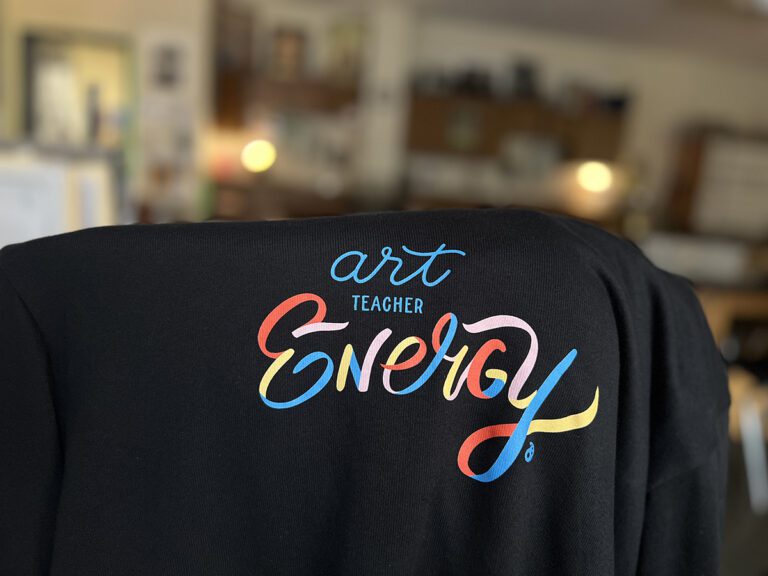Mindlessly doom scrolling on Instagram can sometimes be worthwhile. This was the case when I came across the account @tinyartshow. I was delighted to see the miniature works of art displayed in detailed golden frames. Better yet, tiny art shows invite unsuspecting viewers to get up close. After a couple of likes, I knew I had to create a tiny art show with my own students.
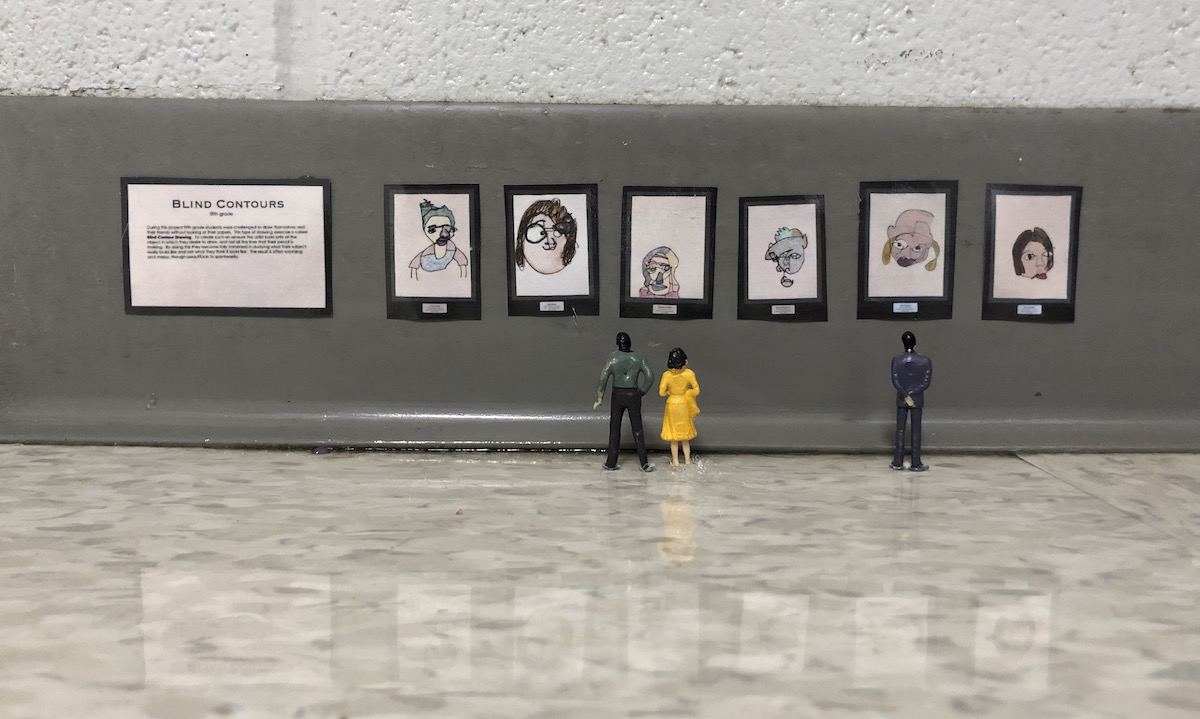
Some Considerations for A Tiny Art Show
1. Using original or printed artwork. Cut paper ahead of time so that students can create little original works of art for display. This is a great assignment for early finishers. Or, take photos and create scaled-down miniature replicas of students’ original artwork. Try importing the photos into Photoshop or even PowerPoint to shrink them down. Place the images on a digital black background. When printed, a black frame will already exist around the tiny images.
2. Laminate for protection. School hallways see a lot of traffic. If works are located in an area where mopping, sweeping, spraying, or just about any cleaning takes place, use that laminator! By laminating the tiny artworks, they will withstand the school-based elements and curious fingerprints. This decision could also lead to potential outdoor exhibitions around the school grounds or local community. If you don’t have access to a laminator, try using layers of packing tape to do the trick.
3. Location is key. Think about a school building’s unused spaces or tucked away corners. A busy hallway where traffic jams occur regularly is not the best location for a tiny art show. Also, consider varying the height of the exhibitions. Artwork hung at different heights will keep all school community members looking and heighten their sense of awareness (pun intended). Consider placing works on the floor, above a bulletin board, or attached to a door frame. Be sure to stay away from any fire alarms or extinguishers.
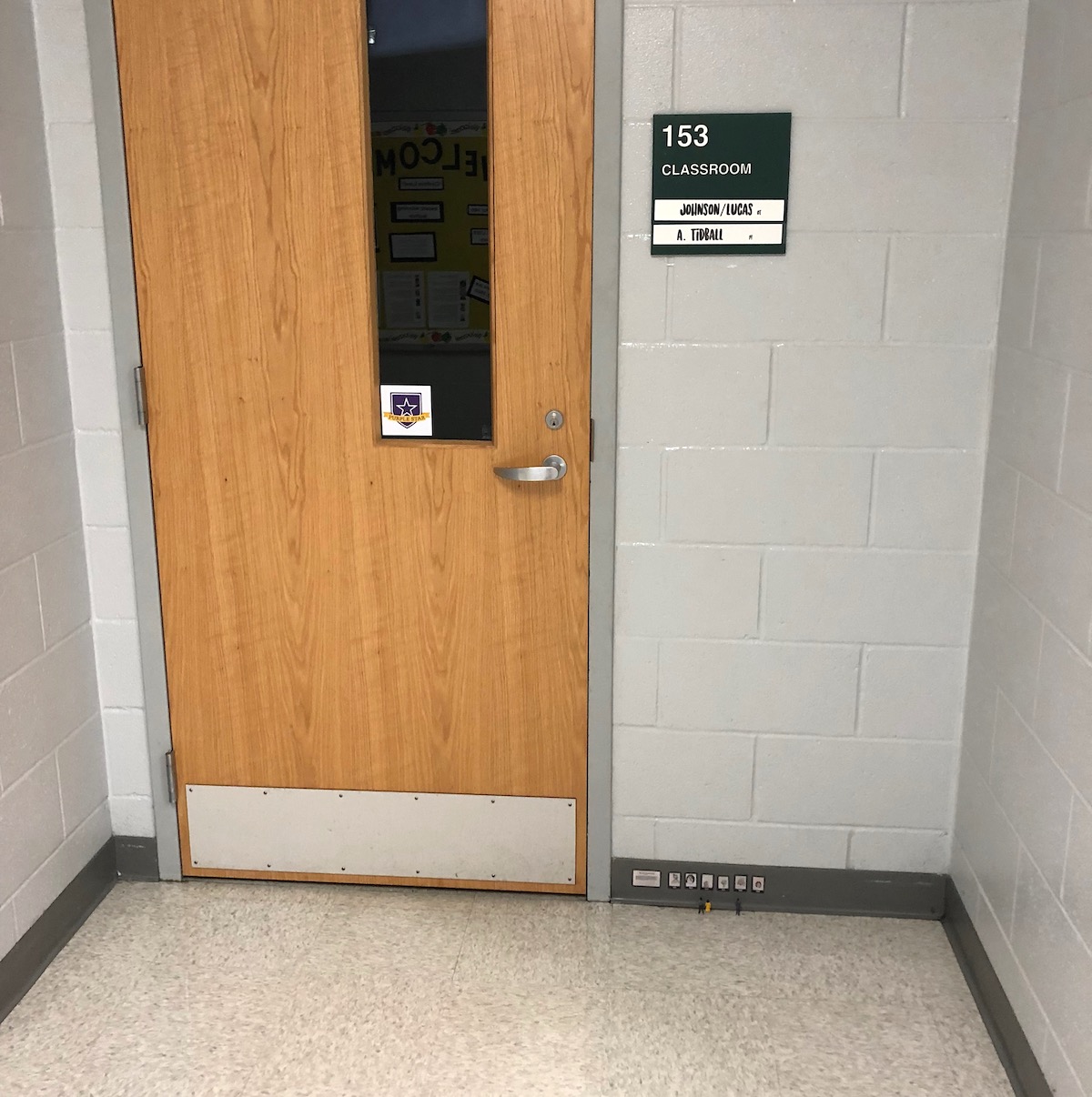
4. Add signage to promote discovery. The works on view can include tiny representations of larger art already on display in the school. Post a sign directing the viewer to an accompanying tiny art show somewhere in the building to discover. Signage could prompt a purposeful hunt for the hidden art.
5. Add tiny gallery-goers. Small characters are not necessary, but they do provide scale and context for the artworks. In some cases, passersby see the small characters before noticing the artwork, pulling them in to discover the exhibition. You can easily purchase these characters online. They come in varying sizes and quality. When buying gallery-viewers, pay attention to the scale ratio of the characters. I use a 1:50 scale character in our tiny art shows. Attach the plastic individuals to the ground in front of the displayed art with hot glue. Remember, the minuscule art patrons do not only have to be humans. Art teacher Ashley McKee uses plastic dinosaurs and animals as gallery-goers in her school’s tiny art shows.
6. Share with others. Post images of your tiny art shows on social media to create buzz around the most recent installation. Only reveal enough information about the location to generate intrigue among students and staff. Tiny visual clues may result in a hunt around the building.
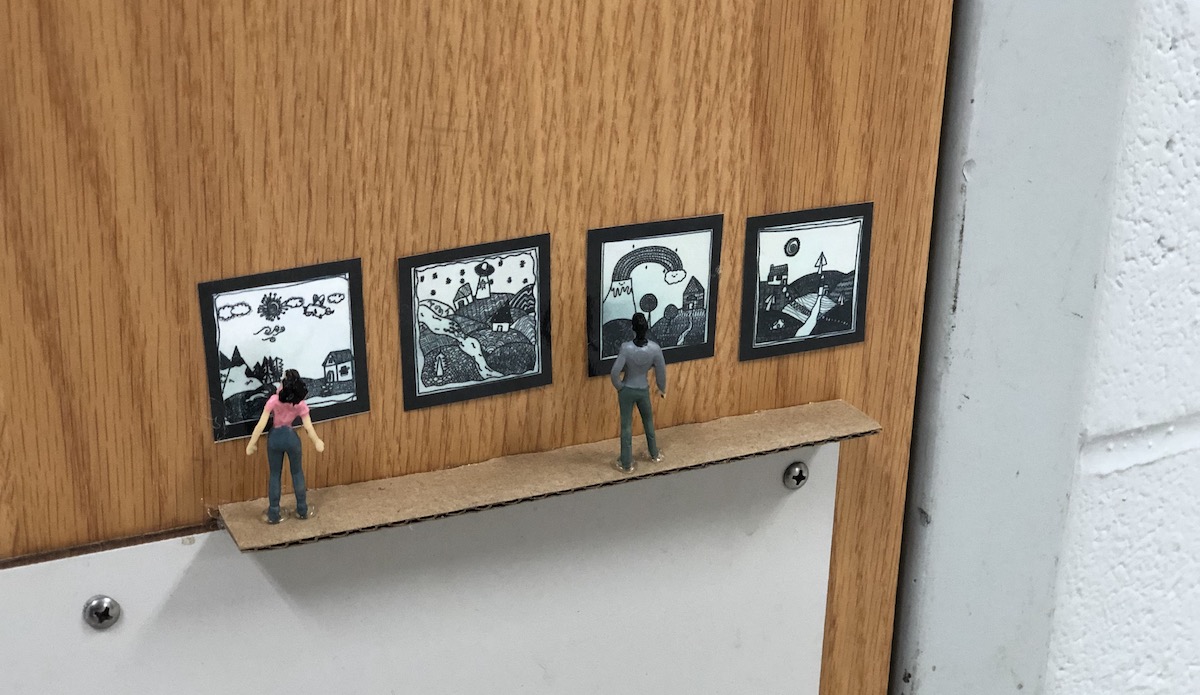
7. Once they are up, they are up… until they are not. Because different viewers can discover these works at various times, the art shows could stay up for as long as possible. But, by changing them out and keeping things fresh, you’ll continue to generate the most interest.
8. Create a tiny art gallery in a dollhouse. Some teachers opt to find a new or retired dollhouse and breathe life into it as a mini gallery. If this option interests you, be sure to regularly switch out the works and display the house in a prominent location.
The Benefits of Tiny Art Shows
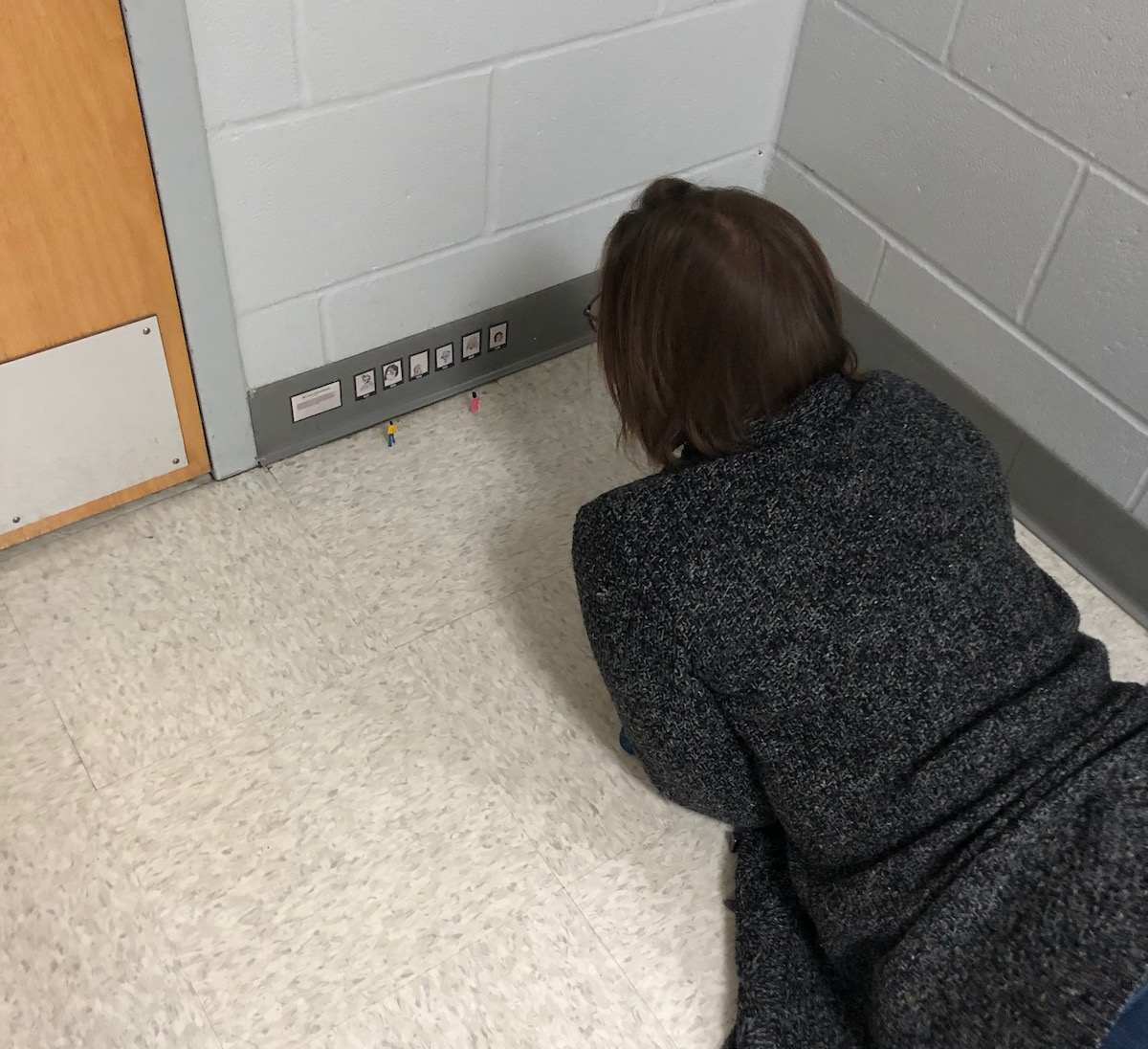
- Awareness: School buildings can become familiar places. This is good, but it may also lead individuals to go through the motions getting from point A to point B. By intriguing individuals in the search for tiny art exhibitions, students and staff have a heightened sense of awareness. In our building, members of our Specialized Learning Center for students with autism notice the works first. They spend the most time in the hallways engaging in different therapies and are excited to tell others about their discoveries.
- Responsibility: Taking care of the artwork becomes the responsibility of everyone in the building. Those tiny people hold intense fascination. At first, they may disappear and go on an adventure to a student’s house. By speaking to each class about the small characters, they may still get knocked over, but they should make their way back to the art room.
- Sharing Student Work: Barriers can prevent an art teacher from displaying a large number of traditionally-sized student images. The works included in the tiny art show could be replicas of art already on view or images made by other students during the same creative experience. This decision may result in the display of many students’ art without having to wallpaper a hallway with examples of one project.
- Enthusiasm: Any time you can generate enthusiasm around an art program, it’s a good thing. The element of surprise brings positive attention to the work taking place in the art room.
- Current Challenges: In our current situation, there are challenges to overcome. Perhaps artwork is not on display in the hallways, or students may attend art class less frequently than in the past. This is where hanging a tiny art show at an elevated location could be a positive experience for everyone. The display’s height can keep curious hands off the work. Lamination also provides an opportunity to disinfect the display following school cleaning protocols.
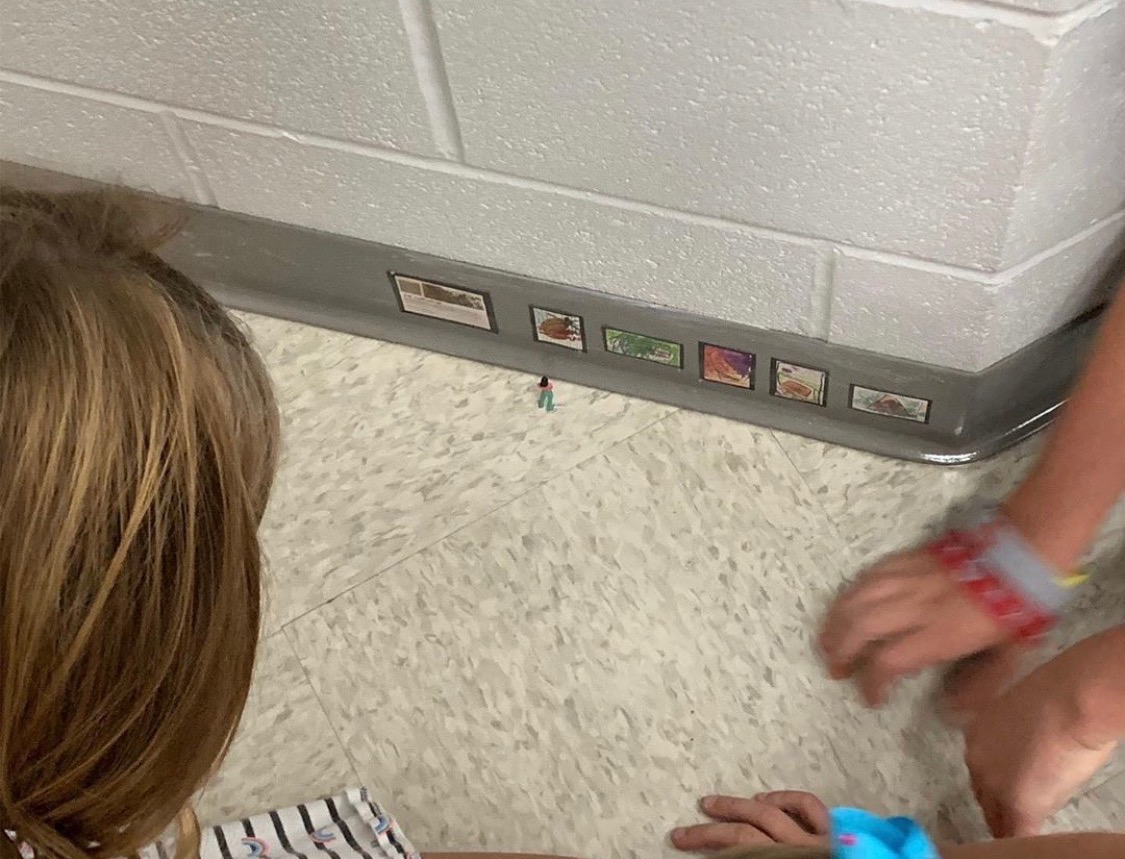
The investment is small, just like the work itself. Still, the pay-offs could be enormous as students and staff engage with artworks in new, exciting ways. Consider a tiny art show as a new adventure in art appreciation.
Where could you set up a tiny art show that is protected and also visible to others?
What digital photos do you already have that could be re-sized into tiny artworks for an exhibition?
Where else, besides a school building, could you display tiny art shows?
Magazine articles and podcasts are opinions of professional education contributors and do not necessarily represent the position of the Art of Education University (AOEU) or its academic offerings. Contributors use terms in the way they are most often talked about in the scope of their educational experiences.
